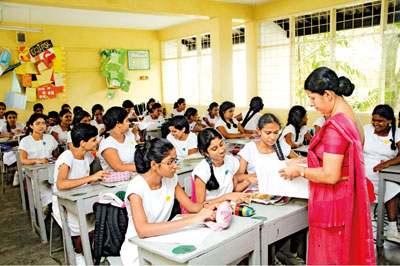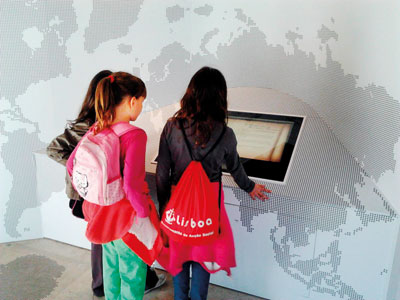The first International Day of Education
View(s):In December 2018, the United Nations General Assembly adopted with consensus a resolution proclaiming 24 January as International Day of Education, in celebration of the role of education for peace and development. As it dedicated a special day to celebrate education worldwide, it reiterated the key role that education plays in building sustainable and resilient societies.
 Education is defined as the process of facilitating learning, or the acquisition of knowledge, skills, values and beliefs. Even in prehistoric times, adults trained the young in the knowledge and skills deemed necessary in their habitats. This would have been achieved through story-telling and imitation thereby passing knowledge, values and skills from one generation to the next. Formal education developed as people began to extend their knowledge beyond skills. Schools seem to have existed in Egypt even at the time of the Middle Kingdom. The first institution of higher learning in Europe was the Academy found by Plato. The educational outlook of Confucius influenced not only the Chinese learners but also people of many nations in East Asia.
Education is defined as the process of facilitating learning, or the acquisition of knowledge, skills, values and beliefs. Even in prehistoric times, adults trained the young in the knowledge and skills deemed necessary in their habitats. This would have been achieved through story-telling and imitation thereby passing knowledge, values and skills from one generation to the next. Formal education developed as people began to extend their knowledge beyond skills. Schools seem to have existed in Egypt even at the time of the Middle Kingdom. The first institution of higher learning in Europe was the Academy found by Plato. The educational outlook of Confucius influenced not only the Chinese learners but also people of many nations in East Asia.
Education is considered to be a major component of the welfare of a nation and is used in the measure of economic development and quality of life. These in turn determines whether a country is developed, developing or under-developed. Therefore, it is important to have a procedure to measure the average level of education of the people living in different nations. One such measure is the Literacy Rate. Literacy rate is the percentage of the population of age 15 years and above, who are able to read and write simple sentences with understanding and with ability to perform simple numerical calculations.
 Literacy rate = (No. of literates aged 15 years and above)/(Total number of people aged 15 and above) X 100 Over the years, global literacy rates have shown an increasing trend. The main reasons for this is the enhanced acknowledgement of the importance of education and the expansion of educational facilities in the world. The global literacy rate is 86.3%. There are some countries where the literacy rate is 100%. Finland, Norway, Poland, South Korea and Russia are some of the countries with this top rate. The education system in Finland is said to be very effective as measured from the performance of secondary students. South Korea has a good record of placement after receiving education and spends 8% of the GDP on education. In Russia, 95% of adults have higher secondary education.
Literacy rate = (No. of literates aged 15 years and above)/(Total number of people aged 15 and above) X 100 Over the years, global literacy rates have shown an increasing trend. The main reasons for this is the enhanced acknowledgement of the importance of education and the expansion of educational facilities in the world. The global literacy rate is 86.3%. There are some countries where the literacy rate is 100%. Finland, Norway, Poland, South Korea and Russia are some of the countries with this top rate. The education system in Finland is said to be very effective as measured from the performance of secondary students. South Korea has a good record of placement after receiving education and spends 8% of the GDP on education. In Russia, 95% of adults have higher secondary education.
 In Sri Lanka, the literacy rate is 92% which is above the global literacy rate. It is heartening to note that in 2017, the literacy rate of the youth between the ages 15 to 24 years was a high 98.9%. At the same time the literacy rate of the elderly who are above 65 years of age was 81. We can be hopeful that our literacy rate will go up further in the time to come. It is sad to note that there are countries where the literacy rate falls below 30%. Niger and Sudan are two such countries. Over 75% of the illiterate adults are in sub-Saharan Africa and South & West Asia.
In Sri Lanka, the literacy rate is 92% which is above the global literacy rate. It is heartening to note that in 2017, the literacy rate of the youth between the ages 15 to 24 years was a high 98.9%. At the same time the literacy rate of the elderly who are above 65 years of age was 81. We can be hopeful that our literacy rate will go up further in the time to come. It is sad to note that there are countries where the literacy rate falls below 30%. Niger and Sudan are two such countries. Over 75% of the illiterate adults are in sub-Saharan Africa and South & West Asia.
Another educational measure that the United Nations publishes is the Education Index. The Education Index is measured combining average adult years of schooling with expected years of schooling for children.
Education Index = (MYSI+EYSI)/2
MYSI is the Mean Years of Schooling Index which is the average number of years of education received by people aged 25 and older in their lifetime based on education attainment levels of the population converted into years of schooling based on theoretical duration of each level attended. EYSI is the Expected Years of Schooling divided by 18. Expected years of schooling is a calculation of the number of years a child is expected to attend school or University. Expected years of schooling is capped at 18 years.
According to the results published in 2015, Australia has the highest Education Index of 0.939. Denmark, Germany, Iceland Ireland, New Zealand, Norway and United States are some of the countries which has an Education Index above 0.9 and South Korea with an index of 0.867 is the highest in Asia. Sri Lanka has a reasonably good education index at 0.752. The countries which has an education index of less than 0.3 include Niger, Sudan and Eritrea.
 The term ‘education’ comes from the Latin word ‘educere’, which means ‘bring out’. Education will bring out the best in human beings. Education is a fundamental human right and it provides individual freedom and empowerment. Education helps individuals to recognize their potential and qualities as human beings. As Nelson Mandela said, “Education is the most powerful weapon which you can use to change the world”. Let us also not forget the important role that informal education plays, which is a lifelong process. Informal education is what is learned outside of the traditional classroom situation. It involves behaviors, skills and values learned through interaction or observation on a regular basis. Let us value education and recognize its significance to individuals and nations.
The term ‘education’ comes from the Latin word ‘educere’, which means ‘bring out’. Education will bring out the best in human beings. Education is a fundamental human right and it provides individual freedom and empowerment. Education helps individuals to recognize their potential and qualities as human beings. As Nelson Mandela said, “Education is the most powerful weapon which you can use to change the world”. Let us also not forget the important role that informal education plays, which is a lifelong process. Informal education is what is learned outside of the traditional classroom situation. It involves behaviors, skills and values learned through interaction or observation on a regular basis. Let us value education and recognize its significance to individuals and nations.
R.N.A. de Silva
ndesilva@osc.lk
The author was a Head of Residence at the United World College of Hong Kong and is now a member of the faculty at the Overseas School of Colombo.


